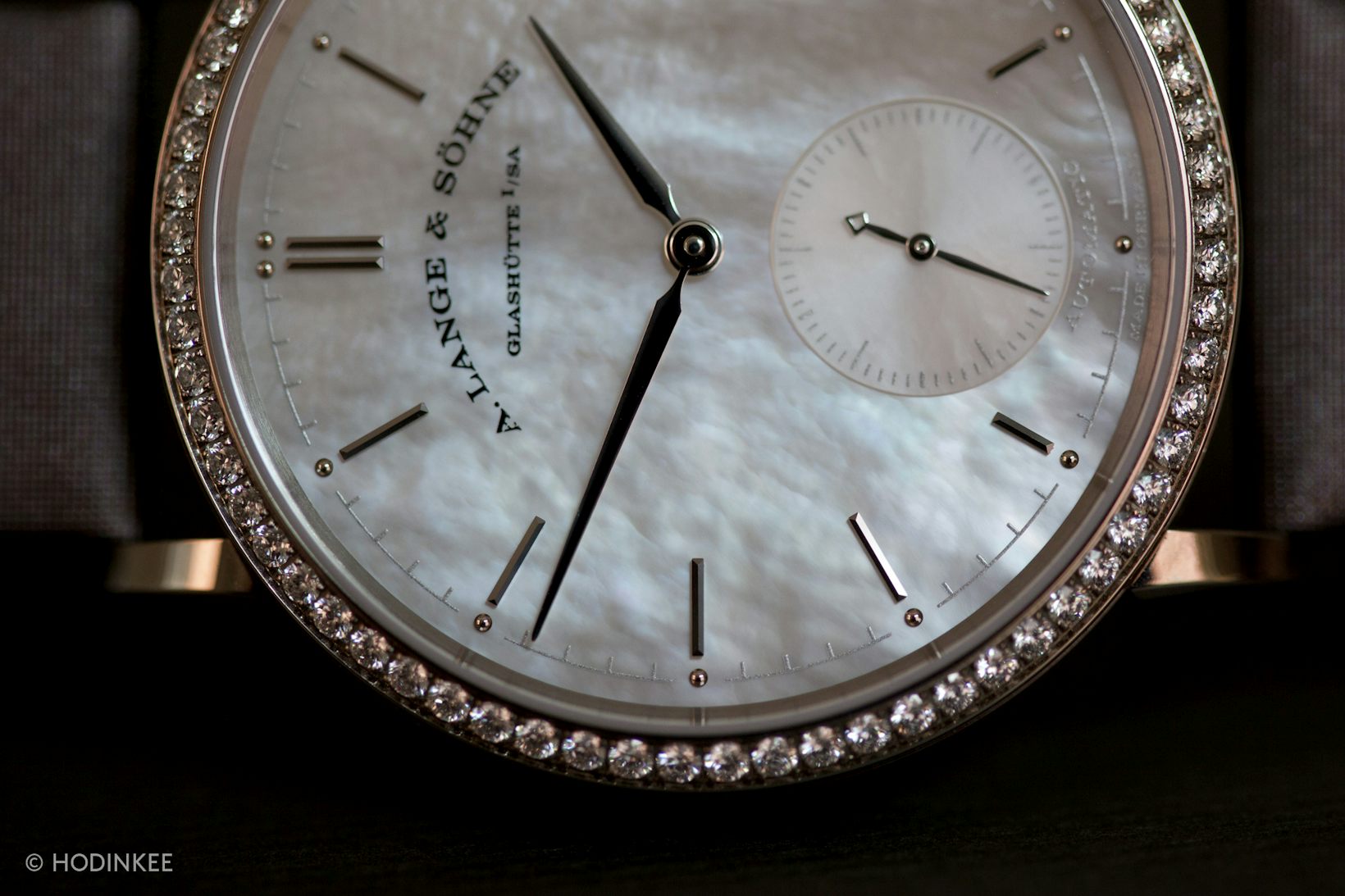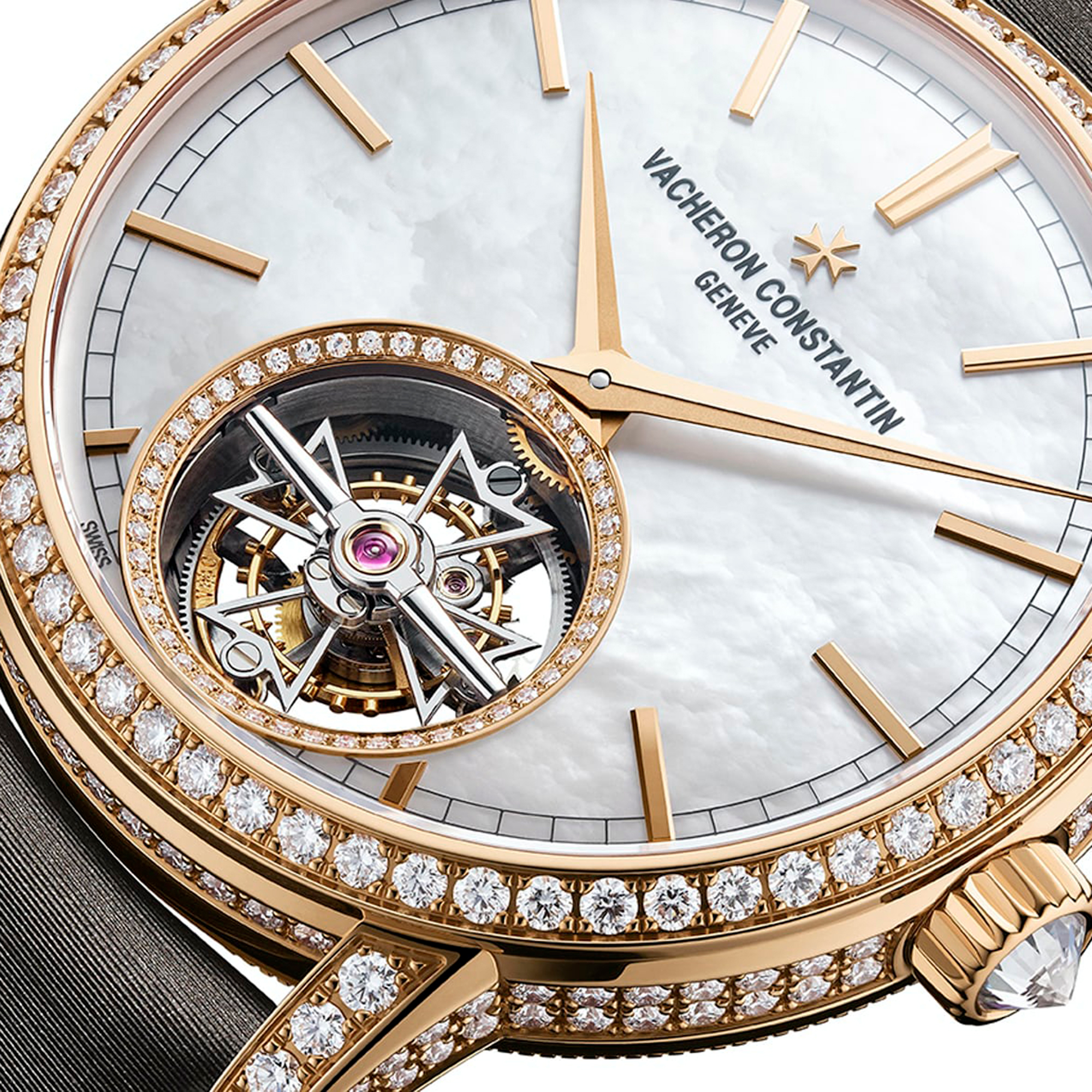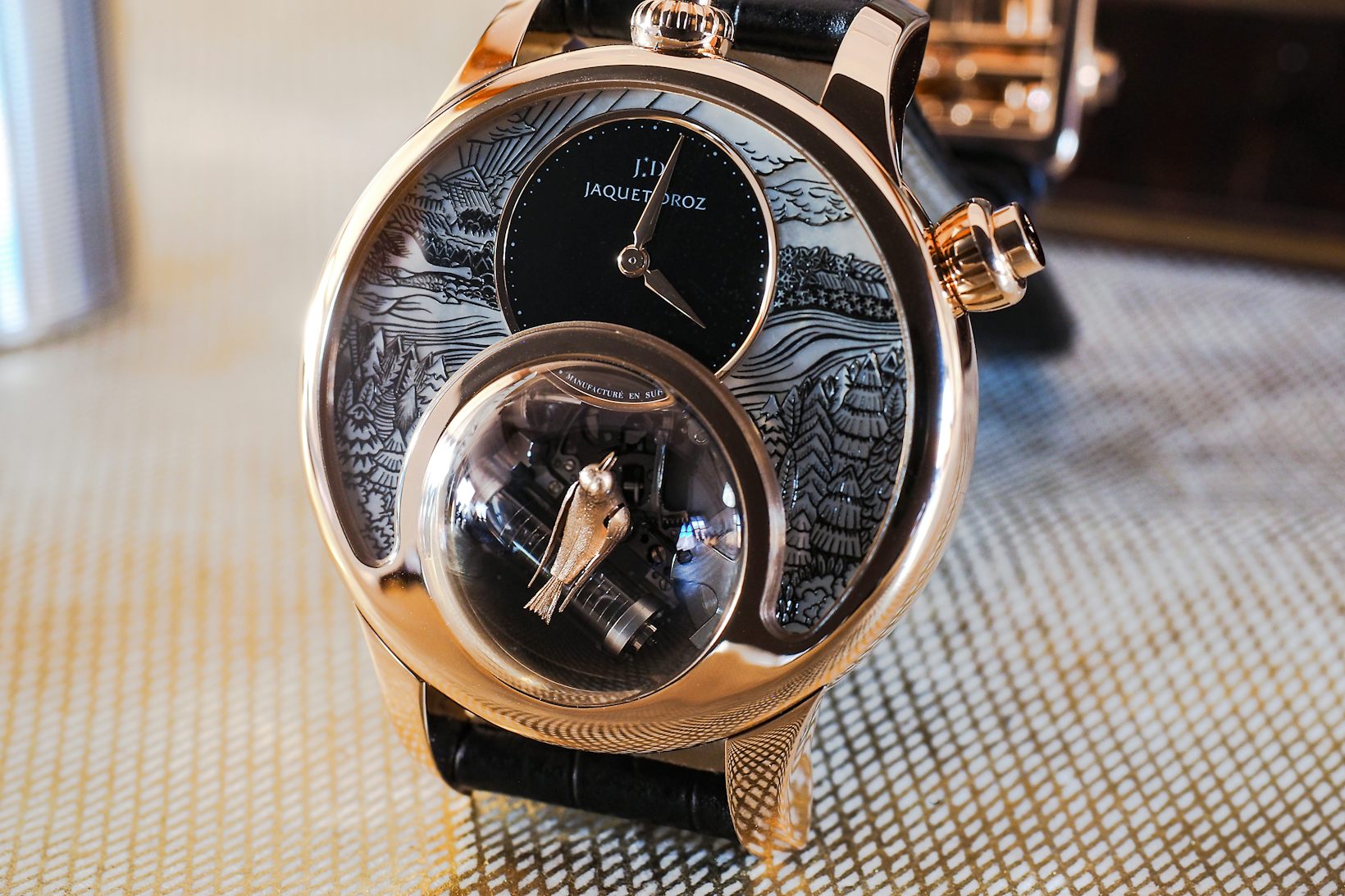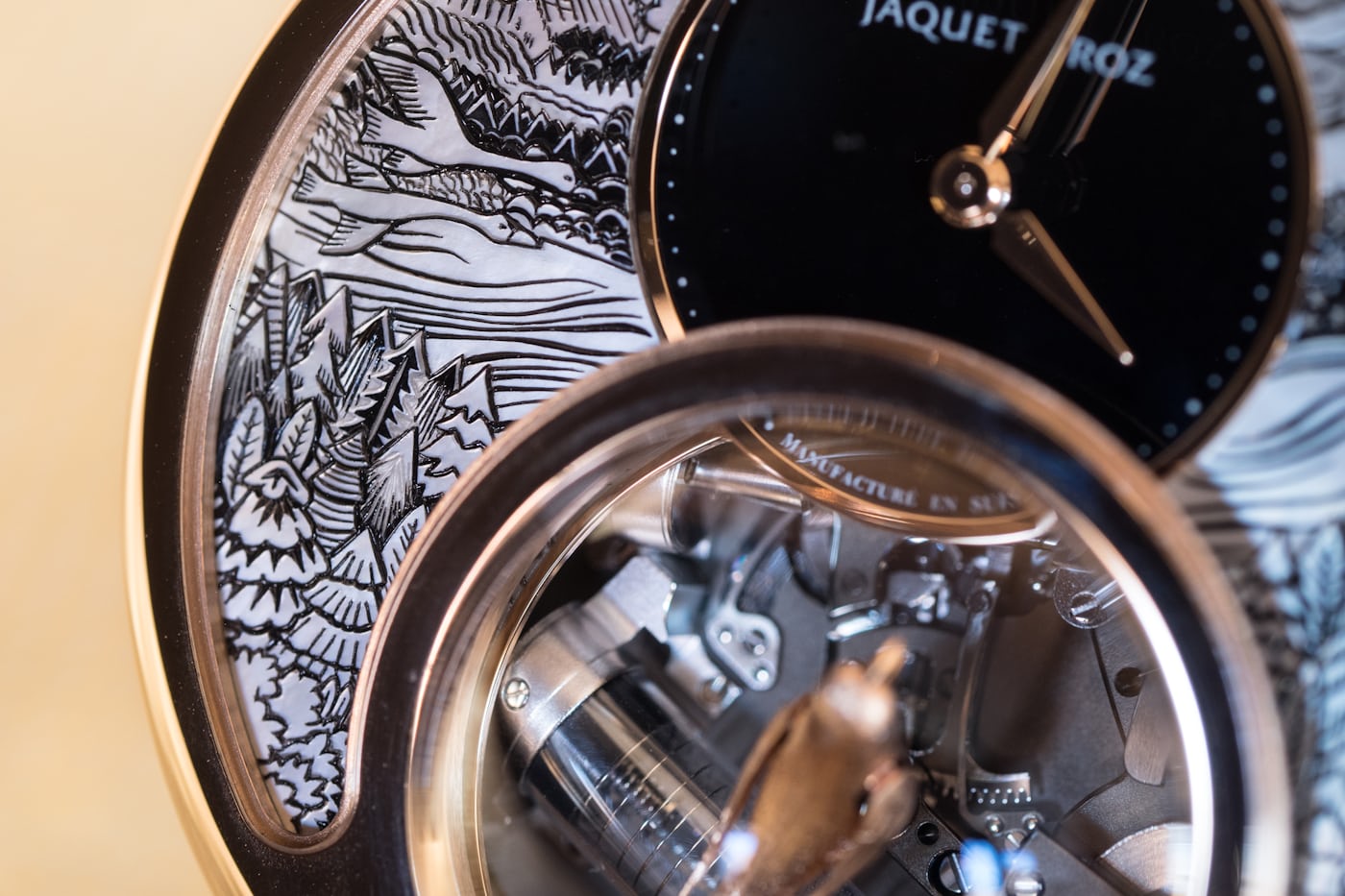In-Depth: A Primer On Mother-Of-Pearl
Watchmaking’s go-to symbol of femininity is tougher than you think.
Mother-of-pearl is, unfortunately, a turn-off to a lot of watch enthusiasts, although not entirely without reason. If the tendency in designing so-called lady’s watches is, at its worst, “shrinking and pinking,” a mother-of-pearl dial is – or can be – part of the visual code of the stereotypical watch for the “feminine client,” as the industry sometimes puts it. Mother-of-pearl, however, like any other raw material, is as debased or as elevated as the design of which it’s a part. While it can fail to rise above the level of lazy cliché, it’s also a player in some of the most beautiful watches in the world – and though it has a reputation for fragility, it is in its natural form, one of the toughest materials on the planet.
Mother-of-pearl is also called nacre, which is a pretty old term – 14th century French, and before that, Italian, and before that, possibly Arabic (naqur, a hunting horn). The material itself, however, is a lot older, and I mean a lot. Nacre is secreted by mollusks and is used as a structural material in their shells, and mollusks have been around for around half a billion years, more or less. Nacre seems to have been part of mollusk shells for as long as there have been mollusks – one of the most ancient members of the tribe, the enigmatic chambered nautilus, has not bothered to change much in 500 million years. The shell of a living nautilus looks, from the outside, utilitarian if not genuinely exciting – there is a fairly snazzy-looking tiger-stripe pattern which wouldn’t look out of place on the hood of a hotrod – but the walls of its home are lined on the interior with layer upon layer of glistening, iridescent nacre, more richly ornamented than the palace of any king or emperor.
You could say if you were in a cynical mood that all that beauty is wasted on a mollusk – with the exception of some of the cephalopods, the phylum is not noted for being overburdened in the brains department. (Maybe we should not make assumptions, though – who knows what beauty the nautilus does or does not perceive, in its alien, ring-shaped brain?) But the mollusks have another use for nacre. Though we watch folk tend to think of it as a terribly fragile, frangible, delicate material, it’s actually one of the strongest forms of armor that the evolutionary arms race between predator and prey has ever produced. And not for nothing do the mollusks need it – their bodies (ask any lover of the briny tang of raw oysters) are soft, and unresisting, and tasty, tasty, tasty. You’d make armor too.
If you stick a sample of nacre under a microscope, you’ll see something that sure looks like armor. Nacre is made of minute plates of aragonite, which is a type of calcium carbonate (CaCO3), the material that birds use for eggshells, and which makes up most seashells. (Diatoms, the microbes whose skeletons pile up half a mile deep on the seafloor, use silicon.) The aragonite plates are arranged in layers, and the layers are glued together with a highly complex organic matrix composed of, among other things, chitin (a protein that makes up the shells of arthropods, your fingernails, and the cell walls of fungi) lustrin (a springlike protein that acts as a shock absorber) and other proteins similar to spider silk. If you compress nacre, the plates of aragonite at the point of pressure lock together, while the protein matrix spreads the pressure out. It’s relatively easy to scratch, but it’s incredibly resistant to other types of mechanical stress.
Just how tough is it? Physicist Pupa Gilbert, at the University of Wisconsin, says that “You can go over it with a truck and not break it – you will crumble the outside [of the shell] but not the [nacre] inside. And we don’t understand how it forms – that’s why it’s so fun to study.”
Nacre is such a wonderful idea that it has evolved independently on several occasions. The mollusks may not be in a position, intellectually, to appreciate its beauty (which I guess means they’re free of the fault of narcissism as well) but they’re not there for the shiny. As well as giving mollusks an exterior so tough it would do a medieval knight proud, its smoothness also helps protect the tender body of the mollusk from injury or irritation. Nacre will form around anything potentially hazardous that gets into the mollusk’s shell, and in some species, the entombed irritant will form a pearl.
While we can reasonably speculate that its beauty is not high on the list of things mollusks appreciate about nacre, it is exactly its shimmer that draws humans to it. People have been using nacre for decorative and ornamental purposes for thousands of years – and if you are used to thinking of it as a delicate material, you should take a walk through any extensive collection of arms and armor, like the one at the Metropolitan Museum Of Art. There you’ll see it used as inlay on a bewildering array of weapons, including crossbows, firearms, and the hilts and scabbards of daggers and swords. The Japanese use it as an inlay material in traditional lacquerware; luthiers use it as an inlay in musical instruments; interior designers use it for tiling.
So why do mother-of-pearl watch dials have a reputation for fragility, if nacre is so tough? It’s mostly due to how thin the material has to be sliced in order for it to be used as a watch dial. The strength of nacre, like any composite material, is thanks to the combination of different properties of different layers, and as it thins out, it becomes more and more likely to flake or chip when you try to cut or etch it.
Watch dials have to be quite thin, obviously, and mother-of-pearl dials are no exception. For this reason, they’re usually produced by specialist firms who have the necessary experience to source quality raw material and fabricate it. Mother-of-pearl can come from a number of different mollusks; some of the highest-quality white mother-of-pearl comes from the Pinctada family of pearl oysters, although there are other natural sources (Pinctada maxima is the largest and rarest of the pearl oysters). Disks are cut from the shell, and then, the nacre has to be ground down to the necessary thinness and cut into circular blanks. By that time, you’ve got a disk about 0.2mm-0.5mm thick. That’s between 200 and 500 microns – each layer of aragonite is about half a micron thick, so by the time you get to the finished dial blank, you have something much less fracture-resistant than the original material.
Cutting apertures in the dial for things like date indications, as well as tiny holes for applied indexes, are usually done nowadays by CNC machines, in order to reduce the risk of damage. Mother-of-pearl dials can also be engraved, and they can be colored as well, both back and front, with a variety of lacquers and paints. The mother-of-pearl disk is usually mounted onto a rigid metal back.
Mother-of-pearl dials can be something watch designers resort to as thoughtlessly as other designers resort to Helvetica, but when you use it thoughtfully, and take care to integrate it properly into the rest of the design, it can take the watch to a whole new level. A simple dial made of high-quality mother-of-pearl is impressive enough on its own, if the quality is there – like any other natural material, quality can vary enormously. The highest quality stuff, much of which comes from Australia, is an even, clear, pearlescent white, but other colors can occur naturally as well (though in high-end watchmaking, white nacre seems to be the most widely used). Unsurprisingly, companies like Bulgari, who are jewelry specialists, are experts at presenting the material as an integrated part of an overall design (as in the Diva’s Dream Peacock Diamonds). Hermès uses nacre for the Moon disks in the Arceau L’Heure De La Lune, where it lends a most appropriate nocturnal shimmer to the proceedings. And nacre is used to depict a most stunning backdrop to one of my favorite horological confections of the last ten years – the Jaquet Droz Charming Bird Automaton.
Properly made and assembled mother-of-pearl dials should be durable and remain lustrous almost indefinitely – almost. Aragonite, it turns out, doesn’t stay aragonite forever. It’s more than stable enough for all practical human intents and purposes, but over a long enough period of time, it tends to decompose to calcite, another variation of calcium carbonate. Don’t let that stop you from enjoying it while you have breath in you, though – the time period for aragonite to decompose to calcite is around ten to a hundred million years. In five times that, the venerable clan of the mollusks has not found it desirable or necessary to alter the basic composition of its resilient, radiant armor. Mother-of-pearl may be a material that is casually dismissed by some hardcore watch enthusiasts, but it has a half-billion-year history to go with its secret beauty – a beauty which is, perhaps, incidental to the mollusks, but not to us.
Headline image, Bulgari Diva’s Dream Peacock Diamonds. Slideshow images, Metropolitan Museum Of Art Permanent Collection.
Get More Articles Like This in Your Inbox
We're constantly creating great content like this. So, why not get it delivered directly to your inbox? By subscribing you agree to our Privacy Policy but you can unsubscribe at any time.




















